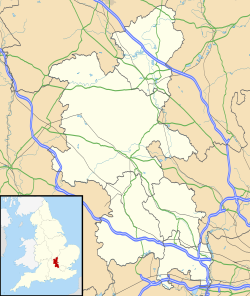History
The old Roman Akeman Street was the main route to Cirencester, Cheltenham and Bath and the Crooked Billet an important coaching inn / staging post.
The original trustees of the Mission Hall were William Kirby, Sydney Hopcroft, James & John Taylor and William Wellings; and adjoining land then owned by Amy Wellings on one side and William Daniels on the other.
Henry Grattan Guinness established the East London Training Institute for Home and Foreign Missions in Stepney Green in 1873, across the road from the Mission Hall of his friend, Thomas Barnardo and moved to larger premises in Harley House in Bow later in that year. The institute was interdenominational and international, opening its own missions in Congo (1878), Peru (1897), India (1899), Borneo (1948), Nepal (1954), and Irian Jaya (1957). Present day Latin Link descends from the Peru mission.
Railway
In the late 19th century the Brill Tramway had a spur to Kingswood.
1871-04-01 Wotton to Quainton Road opened [Wotton Tramway]
1871-08-19 Wood Siding to Wotton opened [Wotton Tramway]
1871-11- Brill to Wood Siding opened [Wotton Tramway]
1871-11- Wood Siding, Church Siding
1872-01- Wotton, Westcott, Waddesdon Road, Quainton Road (Wotton Tramway)
1872-04- Brill
1891-07-01 Verney Junction to Aylesbury started [Metropolitan] [5] [6]
1892-09-01 Aylesbury to Amersham opened
The Metropolitan extended its route north from Baker Street through Harrow and Rickmansworth to Aylesbury and bought out the Aylesbury & Buckingham Railway from Aylesbury via Quainton Road to Verney Junction - and took over the operation of the Wotton Tramway from Quainton Road to Brill. At the same time Manchester, Sheffield, & Lincolnshire Railway extended its main line south to meet the Metropolitan at Quainton Road and then ran along the latter to Finchley Road, where it diverged west to a separate terminus at Marylebone.
This page is based on this
Wikipedia article Text is available under the
CC BY-SA 4.0 license; additional terms may apply.
Images, videos and audio are available under their respective licenses.


